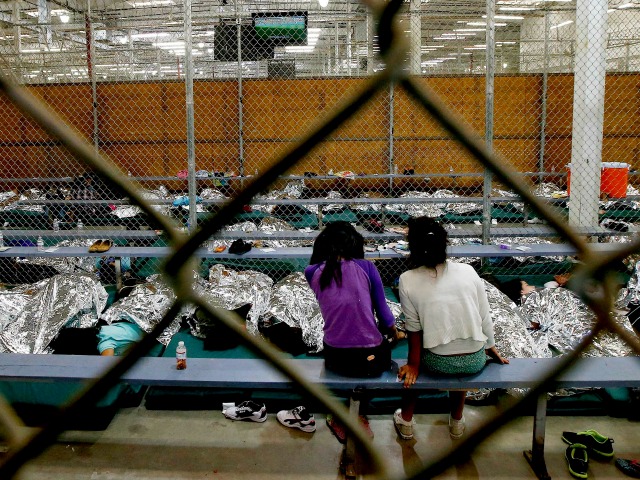There has been a sevenfold increase in credible fear claims in recent years, the vast majority of which are being claimed by immigrants from Honduras, Guatemala, El Salvador, and Mexico, according to a government report published Friday.
Each year the Office of the Citizenship and Immigration Services Ombudsman must submit an annual report to Congress. This year’s report, from Ombudsman Maria M. Odom, reveals the dramatic increase in claims of credible and reasonable fear of harm should they return in order to stay in the United States.
“Within the past three years, there has been a significant increase in the number of foreign nationals, many of them recent arrivals at the U.S. southern border, expressing fear of returning to their home countries and triggering credible and reasonable fear interview referrals to USCIS from [Customs and Border Protection] and [Immigration and Customs Enforcement],” the report reads.
According to the USCIS, the agency has worked to beef up its staff and guidelines to address the increase; however, the overwhelming increase has caused long delays.
“Despite these efforts, the sevenfold increase in credible fear claims – a product of a confluence of factors including regional violence and economic conditions in Mexico, El Salvador, Honduras, and Guatemala – has resulted in lengthy delays for affirmative asylum processing and a significant increase in asylum case referrals to the Immigration Courts,” the report reads.
The agency reveals that between 2000 and 2009, USCIS received about 5,000 of these types of requests annually. By 2009, the number rose to 8,000, and in 2012 the number increased to 13,000. In 2013 the number tripled to 36,000. Charts in the report show that the top countries of origin for people claiming credible fear are El Salvador, Honduras, Guatemala, and Mexico.
El Salvador, Honduras, and Guatemala are the countries from which tens of thousands of unaccompanied minors are streaming into the United States at crisis levels, many under the impression that they can stay, according to Border Patrol Agents.
In April, The New York Times reported that immigration officials believe the standard for initial credible fear tests are intentionally low and that in 2013, 85 percent of the claims were deemed valid. Not nearly as many, however, actually end up attaining asylum status. While immigrants’ asylum cases are considered, however, they are able to remain in the United States.
The USCIS report comes the same week The Blaze obtained a so-called “cheat sheet” illegal immigrants are using to know what to say to U.S. officials to stay in the country and not be deported.
“Several years ago, we would hold illegal aliens until their court date,” a Department of Homeland Security official told The Blaze. “We didn’t have this huge crisis when they knew they couldn’t get away and were being held. Now we let everyone go because we have no space — the administration also makes it impossible to do our job and deport them.”
In February, a 2009 internal fraud assessment document obtained by the House Judiciary Committee revealed that at least 70 percent of asylum applications had signs of fraud.

COMMENTS
Please let us know if you're having issues with commenting.